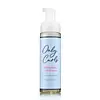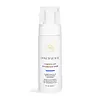What's inside
What's inside
 Key Ingredients
Key Ingredients

 Benefits
Benefits

 Concerns
Concerns

 Ingredients Side-by-side
Ingredients Side-by-side

Water
Skin ConditioningPullulan
Caprylyl/Capryl Glucoside
CleansingPanthenol
Skin ConditioningXylitylglucoside
HumectantDecyl Glucoside
CleansingAnhydroxylitol
HumectantSorbitol
HumectantMaltitol
HumectantOryza Sativa Extract
AbsorbentHydrolyzed Pea Protein
EmollientSodium Benzoate
MaskingXylitol
HumectantHydrolyzed Rice Protein
Skin ConditioningCitric Acid
BufferingPotassium Sorbate
PreservativeParfum
MaskingSodium Citrate
BufferingSaccharomyces Ferment Lysate Filtrate
Skin ConditioningSodium Phytate
Acacia Senegal Gum
MaskingPhenoxyethanol
PreservativeLimonene
PerfumingTrehalose
HumectantBenzyl Benzoate
AntimicrobialBenzyl Alcohol
PerfumingCoumarin
PerfumingLinalool
PerfumingEthylhexylglycerin
Skin ConditioningPelvetia Canaliculata Extract
Skin ProtectingWater, Pullulan, Caprylyl/Capryl Glucoside, Panthenol, Xylitylglucoside, Decyl Glucoside, Anhydroxylitol, Sorbitol, Maltitol, Oryza Sativa Extract, Hydrolyzed Pea Protein, Sodium Benzoate, Xylitol, Hydrolyzed Rice Protein, Citric Acid, Potassium Sorbate, Parfum, Sodium Citrate, Saccharomyces Ferment Lysate Filtrate, Sodium Phytate, Acacia Senegal Gum, Phenoxyethanol, Limonene, Trehalose, Benzyl Benzoate, Benzyl Alcohol, Coumarin, Linalool, Ethylhexylglycerin, Pelvetia Canaliculata Extract
Water
Skin ConditioningPullulan
Galactoarabinan
Aloe Barbadensis Leaf Juice
Skin ConditioningGlycerin
HumectantCaprylyl/Capryl Glucoside
CleansingGluconolactone
Skin ConditioningSodium Benzoate
MaskingCalcium Gluconate
HumectantHydrolyzed Rice Protein
Skin ConditioningDecyl Glucoside
CleansingLauryl Glucoside
CleansingSorbitol
HumectantPotassium Sorbate
PreservativeCananga Odorata Flower Oil
MaskingLavandula Angustifolia Oil
MaskingCitrus Aurantium Dulcis Peel Oil
MaskingSalvia Sclarea Oil
MaskingVanillin
MaskingPogostemon Cablin Leaf Oil
MaskingGlycine Soja Oil
EmollientHydroxypropyltrimonium Honey
Sorbic Acid
PreservativeCitric Acid
BufferingDiheptyl Succinate
EmollientCapryloyl Glycerin/Sebacic Acid Copolymer
Skin ConditioningVaccinium Macrocarpon Seed Oil
Skin ConditioningVitis Vinifera Seed Oil
EmollientCucurbita Pepo Seed Oil
EmollientMacadamia Ternifolia Seed Oil
EmollientMacelignan
AntimicrobialTocopherol
AntioxidantLinalool
PerfumingLimonene
PerfumingWater, Pullulan, Galactoarabinan, Aloe Barbadensis Leaf Juice, Glycerin, Caprylyl/Capryl Glucoside, Gluconolactone, Sodium Benzoate, Calcium Gluconate, Hydrolyzed Rice Protein, Decyl Glucoside, Lauryl Glucoside, Sorbitol, Potassium Sorbate, Cananga Odorata Flower Oil, Lavandula Angustifolia Oil, Citrus Aurantium Dulcis Peel Oil, Salvia Sclarea Oil, Vanillin, Pogostemon Cablin Leaf Oil, Glycine Soja Oil, Hydroxypropyltrimonium Honey, Sorbic Acid, Citric Acid, Diheptyl Succinate, Capryloyl Glycerin/Sebacic Acid Copolymer, Vaccinium Macrocarpon Seed Oil, Vitis Vinifera Seed Oil, Cucurbita Pepo Seed Oil, Macadamia Ternifolia Seed Oil, Macelignan, Tocopherol, Linalool, Limonene
Ingredients Explained
These ingredients are found in both products.
Ingredients higher up in an ingredient list are typically present in a larger amount.
Caprylyl/Capryl Glucoside is an alkyl glucoside. This just means it is creating by reacting alcohol and sugar. It is a cleansing and foaming ingredient.
Caprylyl/Capryl Glucoside helps remove the dirt, oil, and other pollutants from your skin.
Citric Acid is an alpha hydroxy acid (AHA) naturally found in citrus fruits like oranges, lemons, and limes.
Like other AHAs, citric acid can exfoliate skin by breaking down the bonds that hold dead skin cells together. This helps reveal smoother and brighter skin underneath.
However, this exfoliating effect only happens at high concentrations (20%) which can be hard to find in cosmetic products.
Due to this, citric acid is usually included in small amounts as a pH adjuster. This helps keep products slightly more acidic and compatible with skin's natural pH.
In skincare formulas, citric acid can:
While it can provide some skin benefits, research shows lactic acid and glycolic acid are generally more effective and less irritating exfoliants.
Most citric acid used in skincare today is made by fermenting sugars (usually from molasses). This synthetic version is identical to the natural citrus form but easier to stabilize and use in formulations.
Read more about some other popular AHA's here:
Learn more about Citric AcidDecyl Glucoside is a glucose-based surfactant and emulsion stabilizer. It is created by reacting glucose with the fatty acids from plants.
Surfactants help clean the skin by trapping oil, sebum, and dirt to be washed away. As an emulsion stabilizer, it stabilizes the ingredients in a product by preventing them from separating.
This ingredient is biodegradable and non-toxic. This ingredient is commonly found in baby shampoos.
Decyl Glucoside is sometimes used to stabilize the UV filter Tinosorb.
Learn more about Decyl GlucosideHydrolyzed Rice Protein is protein extracted from rice. This ingredient is rich in antioxidants and peptides.
Studies show this ingredient may help with blocking the melanin creation process when skin is exposed to UV.
Limonene is a fragrance that adds scent and taste to a formulation.
It's found in the peel oil of citrus fruits and other plants such as lavender and eucalyptus. The scent of limonene is generally described as "sweet citrus".
Limonene acts as an antioxidant, meaning it helps neutralize free radicals.
When exposed to air, oxidized limonene may sensitize the skin. Because of this, limonene is often avoided by people with sensitive skin.
The term 'fragrance' is not regulated in many countries. In many cases, it is up to the brand to define this term. For instance, many brands choose to label themselves as "fragrance-free" because they are not using synthetic fragrances. However, their products may still contain ingredients such as essential oils that are considered a fragrance.
Learn more about LimoneneLinalool is a fragrance and helps add scent to products. It's derived from common plants such as cinnamon, mint, citrus, and lavender.
Like Limonene, this ingredient oxidizes when exposed to air. Oxidized linalool can cause allergies and skin sensitivity.
This ingredient has a scent that is floral, spicy tropical, and citrus-like.
Learn more about LinaloolPotassium Sorbate is a preservative used to prevent yeast and mold in products. It is commonly found in both cosmetic and food products.
This ingredient comes from potassium salt derived from sorbic acid. Sorbic acid is a natural antibiotic and effective against fungus.
Both potassium sorbate and sorbic acid can be found in baked goods, cheeses, dried meats, dried fruit, ice cream, pickles, wine, yogurt, and more.
You'll often find this ingredient used with other preservatives.
Learn more about Potassium SorbatePullulan is a low viscosity polysaccharide (a long chain carbohydrate) with binding and film forming properties when dissolved in water. It is used to create a "silicone-like" or silky feel in cosmetics without adding viscosity.
According to a manufacturer, this ingredient's ability to easily dissolves makes it a great carrier for active ingredients.
Due to it being edible and tasteless, you'll likely find this ingredient in breath freshener strips. This ingredient is produced from the starch of the fungus, Aureobasidium pullulans.
Pullulan is stable over a broad-range of pH.
Learn more about PullulanSodium Benzoate is a preservative. It's used in both cosmetic and food products to inhibit the growth of mold and bacteria. It is typically produced synthetically.
Both the US FDA and EU Health Committee have approved the use of sodium benzoate. In the US, levels of 0.1% (of the total product) are allowed.
Sodium benzoate works as a preservative by inhibiting the growth of bacteria inside of cells. It prevents the cell from fermenting a type of sugar using an enzyme called phosphofructokinase.
It is the salt of benzoic acid. Foods containing sodium benzoate include soda, salad dressings, condiments, fruit juices, wines, and snack foods.
Studies for using ascorbic acid and sodium benzoate in cosmetics are lacking, especially in skincare routines with multiple steps.
We always recommend speaking with a professional, such as a dermatologist, if you have any concerns.
Learn more about Sodium BenzoateSorbitol is a sugar alcohol. It is a hydrating and moisturizing agent created from the reduction process of glucose.
Most sorbitol is usually made from potato starch. It is also found in fruits such as apples and pears.
As a humectant, Sorbitol helps draw water to the skin. This helps keep the skin hydrated. Sorbitol also helps create a thicker texture in products. You might find sorbitol in your toothpaste and other gels.
It is a non-irritating ingredient that is great for those with dry skin.
Sorbitol is a prebiotic. It helps promote the growth of healthy bacteria on your skin. The bacteria on your skin form a microbiome. This microbiome helps protect your skin from infection and harmful bacteria.
Learn more about SorbitolWater. It's the most common cosmetic ingredient of all. You'll usually see it at the top of ingredient lists, meaning that it makes up the largest part of the product.
So why is it so popular? Water most often acts as a solvent - this means that it helps dissolve other ingredients into the formulation.
You'll also recognize water as that liquid we all need to stay alive. If you see this, drink a glass of water. Stay hydrated!
Learn more about Water